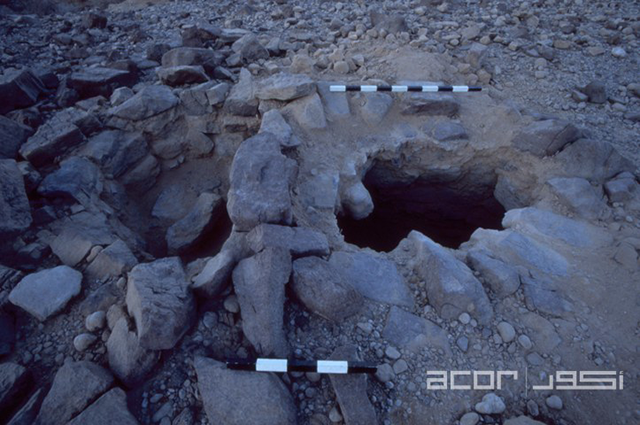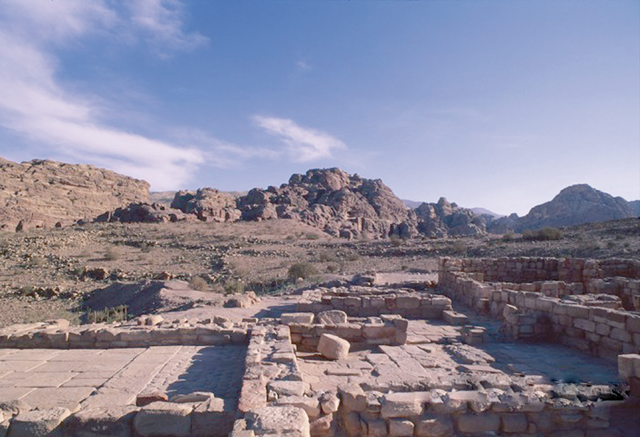You are here
Nabataean Legacy: studying trade routes, cross-cultural ties, architecture marvels
By Saeb Rawashdeh - Jun 03,2024 - Last updated at Jun 03,2024

Tomb of Amyntas, a rock-cut tomb in Asia Minor (Photo by Alexey Komarov)
AMMAN — The Nabataeans were skilful merchants who become known to the ancient world in the Classical and particularly Hellenistic periods. Their trade routes stretched from Yemen to Gaza and Damascus, and from the Levant to other commercial centres of the Mediterranean. Archaeological evidence and written sources testify about the Nabataean merchant posts in the centre of the imperial policy-Rome. On the other hand, the Nabataeans had political and commercial contacts with Indians, Chinese and Egyptians and these contacts were influential.
Ties with major centres of the known world have been verified by artefacts found outside the Nabataean Kingdom and the ancient historian Strabo (64BC-24AD), who was a Greek from the Asia Minor, mentioned the Nabataeans in his work “Geography”.
Another historian, Josephus (37AD-100AD) describes complex relations between the Kingdom of Nabataea with its neighbours.
Historical sources do not provide enough examples of cross-cultural marriages between Nabataeans and other cultures, but there is an exception. The only Nabataean cross marriage is mentioned by Josephus who says that Herod Antipas married the daughter of the Nabataean king Aretas IV (9BC-AD 40) and later Antipas divorced his wife and remarried.
The scholar John Healey from the University of Manchester wrote about the link between the Nabataean Kingdom and Asian Minor, with Lycians who inhabited south-western parts of Anatolia and belonged to Indo-European language group. Lycians were colonists from Crete under Serapedon, according to Herodotus (484BC-425BC), and they were named after Lycus, the son of Pandion II, king of Athens.
Lycia was under the Persian Empire in 546BC and later on it was occupied by the Alexander the Great in 333BC. It was then conquered by Ptolemy in the Hellenistic Period. Lycia became a Roman province in 46AD and incorporated by Romans Lycia enjoyed a certain independence in the first decades of the Roman Empire.
“The longest and most important Nabataean inscriptions have been found in Hegra and these are tomb inscriptions, providing us with evidence of Nabataean juridical and legal aspects. The Nabataean-Lycian link became evident after comparisons between the Nabataean and Lycian inscriptions inscribed on the rock cut tombs,” noted Zayed Salameen from Hussein Bin Talal University, adding that after a thorough investigation and study, historians and archaeologists were able to draw parallels between the Lycian and Nabataean tomb inscriptions.
Both followed the Greco-Roman, Hellenistic and Ptolemaic architectural patterns and there are similarities in the design of the Lycian and Nabataean rock-cut tombs
“Most tombs are for families and their internal size is comparatively small and is entered through steps. The Lycian burial chambers have flat ceiling and most were designed with three burials couches [triclinia] with enough space between couches to allow the movement,” Salameen said, noting that some of the Nabataean tombs have the same design.
Furthermore, the Lycian burial chambers were cut inside three burial couches (triclinia), meanwhile, the triclinia were constructed near the tombs and not inside it, the scholar explained, adding that the Turkmaniyah tomb inscription in Petra hints the triclinium was part of the Nabataean tomb complex even though some tombs were not furnished with triclinia. Additionally, the distribution of the loculi inside the tombs is different.
“There are differences in some cases such as the general distribution of the tombs. The Lycian tombs rise up the rock face like multistorey apartments while the Nabataean tombs are not arranged in the same manner as the Lycian except the Petra Pylon Tombs,” Salameen said.
Other parallels are the main Nabataean theatre in Petra which was carved in the rock and it is the only rock-cut theatre in the southern Levant and the Lycian theatres in some Lycian cities in southern Anatolia.
“The close similarities between the Nabataean and Lycian tomb inscriptions may be attributed to be the Nabataeans’ direct contact with these civilisations or at least to their knowledge of the cultures of these civilisations and this affected their artistic and cultural achievements, while they attempted to imitate and emulate some of the foreign cultures,” Salameen concluded.
Related Articles
AMMAN — The Nabataean social structure revolved around the family, clan and tribe, and it can traced back the Nabataean nomadic past.
AMMAN — During Hellenistic Period [323BC-32BC] very few inscriptions referred to the Nabataean merchants in the Hellenistic world.
AMMAN — The evidence gathered from Petra, the Negev Desert and Dead Sea region proved the presence of Nabataean culture long after 2nd centu

















